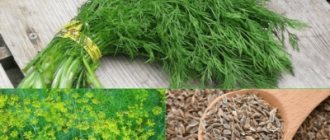Roses are a real decoration of any garden. In the middle zone, and even in the more southern regions of Russia, plants delight flower lovers with their beauty for a couple of months. However, there is a way that allows you to cut bouquets of charming flowers grown with your own hands all year round - growing this crop indoors. In addition to contemplating their beauty, flower growers have a chance to make money by selling flowers in winter and spring.
Famous gardeners and amateurs, with 6 acres of land and endless enthusiasm behind them, have developed many methods for growing crops in a greenhouse. Their most effective tips and recommendations are collected in this article.
Selecting a greenhouse and a set of additional equipment
First of all, it is important to choose the right future home for the queen of flowers. It should be:
- Quite spacious and high (from the top shoots to the ceiling - at least 2 m).
- Durable and resistant to temperature fluctuations from -40 to +100 degrees Celsius, in order to withstand several seasons in a row and not collapse under the influence of weather, atmospheric and anthropogenic phenomena.
- Light, that is, equipped with transparent walls and ceiling.
- Warm, or rather, well insulated from external atmospheric influences.
- Comfortable for plants and people serving them.
Perhaps, similar requirements are characteristic of polycarbonate, a relatively young material on the greenhouse construction market. The main advantage of this material is the ease of construction and assembly of structures made from it. A typical property of polycarbonate is chemical inertness, as well as the absence of the need to build a capital foundation for construction.
In order to ensure normal conditions for plants, even a small greenhouse for year-round growing of roses needs to be equipped with additional equipment:
- a forced ventilation system with heating and/or cooling of the air brought inside the greenhouse;
- a system for watering and delivering moisture and nutrients to the roots and above-ground parts of plants;
- a solar screening system to increase the amount of natural light entering in winter and limit it in summer;
- artificial lighting to create conditions as close as possible to natural ones, especially in winter;
- a soil and air heating system that operates exclusively in the cold season.
In addition to these complex mechanized or fully automatic devices and systems, growing roses in greenhouse conditions will require classic gardening tools, represented by hoees and rippers, shovels, water containers, sprayers and watering cans. They will be useful for daily plant care.
Industrial greenhouse complexes
If we are talking about the construction of not just one greenhouse, but an entire greenhouse complex, then its dimensions will differ. The height of the columns can be 4.5-5 meters, the span width can be 8-9.6 meters. The columns are installed at a distance of 4-6 meters from each other. A large volume of air allows for slower cooling or heating of the air (which is especially important in the summer months) and maintains the optimal air temperature with lower heat consumption. Often, such enterprises purchase farms where greenhouses have already been built with a spacing of up to 6.5 meters and a stand height of up to 3 meters. In this case, the air volume is increased by lengthening the support posts to 4 meters. The cost of such reconstruction is estimated at about $500 thousand/ha.
“Industrial” greenhouses are equipped with a heat distribution system with the ability to adjust it automatically (using a computer). For heating, it is optimal to use built-in boiler rooms within the greenhouse complex. In addition, you will need a drip irrigation system, which includes a system of main pipelines with filtering equipment, storage tanks for irrigation water, drip lines of various types with compensated drippers, equipment for preparing fertilizer solutions, mixers for solutions, and aeration systems for irrigation water.
To reduce overheating of the greenhouse in the summer and to reduce heat loss in the winter, curtain systems with a capacity of 50% are used. Such curtains can save up to 30% of heat. And when using backlighting, they help increase the level of illumination for plants.
To establish the same temperature throughout the greenhouse, circular hydrofen fans are used, to which water is supplied for fine spraying. In summer, they help reduce air temperature and increase humidity. In addition, the supply of fresh air increases the rate of photosynthesis of flowers.
To sublimate sulfur used to combat powdery mildew, so-called sulfurators are used, which are evenly hung over the entire area of the greenhouse and connected to the power supply through a timer or an automation system for the entire greenhouse. A special computer is used as a climate control system, which controls heating, ventilation, plant power and watering systems, CO2 feeding, and evaporative cooling.
The construction of 4 hectares of such greenhouses costs about 4.5 million euros. This amount includes materials and equipment, customs duties on equipment, work, transportation costs for the delivery of equipment and materials, refrigeration equipment, sorting line, design and survey work.
Rules and terms for planting seedlings
plant roses in closed ground, especially if the greenhouse is heated, all year round. The exception is January and February: during these months, seedlings need maximum natural light, and the sun in the middle of winter is not bright enough.
Before planting, it is important to prepare the soil, the temperature of which at the time of planting should be at least 12 degrees. Rotted humus and manure, peat and superphosphate are added to the garden soil . This will be enough for the active formation of shoots.
Before planting, it is important to constantly moisten the prepared planting material so that even the tips of the shoots remain alive. They can also be buried with soil, leaving a grafting site above its surface. Before planting, the seedlings need to be soaked in settled clean water and last year’s growth should be cut off , leaving approximately 20 cm above the grafting. When planting, it is important to carefully monitor the depth of the planting hole.
Deeply planted roses begin to rot, and those not deep enough grow weak and may not take root. It is important to water the soil well before planting so that the roots of young plants take root faster.
The planting density of roses in a greenhouse is slightly higher than in open ground, and is about 10 plants per square meter. It is important to take into account the varietal characteristics of the plants planted in the greenhouse. If the bushes are expected to be large, it is better to plant them sparser. As a rule, after the first year of cultivation, overgrown bushes can be thinned out.
How to register a business?
Many farmers grow chrysanthemums, gladioli or roses in a greenhouse without registration, in the format of a personal subsidiary plot. In this case, the products can be given to resellers who are not particularly interested in their origin. But in order to work with other enterprises, you will have to create an individual entrepreneur or peasant farm on the unified agricultural tax with the following OKVED codes:
OKVED for growing roses
| 01.19 | Growing other annual crops |
| 01.19.2 | Floriculture |
| 01.19.21 | Growing flowers in open and protected ground |
Activities such as growing lavender from seeds at home, growing roses or other flowers do not require mandatory product certification, although, if desired, a farmer can obtain a declaration of quality from some testing laboratory. But when selling the harvest you will need:
- Phytosanitary inspection report from Rosselkhoznadzor;
- Quarantine certificate for selling flowers to other regions.
The best varieties for the greenhouse
In greenhouse culture, special attention is paid to the selection of rose varieties. If ground varieties are selected based on the size and color of the bud, then for greenhouses the fundamental point is resistance to disease and lack of light and/or heat.
The following varieties of roses are considered the most suitable for growing in greenhouses:
| Variety name | Description | Advantages of the variety |
| Queen Elizabeth (Grandiflora group) | An erect bush up to one and a half meters high. The flowers are densely double, pink, with a weak aroma, about 10 cm in diameter. | Shade-tolerant and cold-resistant variety. Can be stored for a long time when cut. |
| Komsomolsky Ogonyok (Grandiflora group) | A smooth, erect bush up to 1.2 m high. The flowers are red with a golden center, up to 13 cm in diameter, velvety to the touch. | Hardy, profusely and long-flowering variety. |
| Niccolo Paganini (Floribunda group) | Beautiful foliage and an abundance of dark red buds make this variety quite charming. | It holds up well when cut, blooms for a long time, and is resistant to lack of light. |
| Carte Blanche (Floribunda group) | The bush is about 1 meter high, compact, completely covered with large and very fragrant white buds. | Resistant to most fungal diseases. Very long flowering even in open ground, right up to the first frost. |
| Rose Gojard (hybrid tea roses) | Tall bushes with large, goblet-shaped, densely double flowers of carmine-red color. The underside of the petals is almost white, which is why the flowers look very unusual. | Very high resistance to pests and diseases is affected only under unfavorable conditions (low temperature with high humidity and stagnant air). |
| Little Flirt (hybrid variety) | Miniature roses with red and yellow buds. There is no aroma. | High resistance to lack of light and heat. The variety was bred specifically for the greenhouse. |
| Skarlet Gem (hybrid variety) | A compact bush dotted with miniature goblet-shaped inflorescences of red-orange color. | Greenhouse variety, resistant to lack of light and heat. |
| Beauty Secret (hybrid variety) | A miniature variety with magnificent, densely double, goblet-shaped inflorescences with a diameter of no more than 5 cm. | The variety is intended for cultivation in a greenhouse. Resistance to diseases and pests is excellent. |
| Baccara (hybrid tea) | Compact bush up to 80 cm high. Flowers are goblet-shaped, double, up to 8 cm in diameter. The color of the petals is dark red, almost black. | High frost resistance, very abundant flowering. |
| Casanova (hybrid tea variety) | Tall densely leafy bush. The flowers are pointed with a high center. The petals are thin, straw-colored with orange strokes at the base. | Repeated flowering after cutting. High ability to form new shoots. |
Valley of Roses near Alapaevsk
Feeding and caring for flowers will be significantly simplified if you buy grafted roses from a supplier - they are the least susceptible to death. In addition, then you will be able to graft plants yourself in order to develop an additional source of income - selling seedlings.
Buy seedlings exclusively from specialized agricultural nurseries - this way you will minimize the risks of purchasing low-quality planting material. And even if there are none in your region, place an order in the online store of one of these companies. Don't forget to check what kind of packaging the plants will be delivered to you in. Ideally, these should be plastic containers.
Hybrid tea roses are ideally suited for greenhouse cultivation. The created lighting and temperature in the greenhouse will contribute to their full development. For this purpose, there are special variations of the variety that are resistant to cold and disease.
Gardeners love to grow hybrid tea roses for their special beauty and grace. Regardless of the subspecies, this plant has a very dense bud. Flowers can have both double and regular petals. The structure of the bushes is compact, upright and spreading. Hybrid tea roses also differ in their scent. Some varieties have a citrus aroma.
Also, one should not forget that the above-ground part is tightly intertwined with the root system, and if the first is cut off or pinched, this will lead to a reduction in the entire root. This means that damage to the green mass should be minimal: the stronger the plant, the more shoots will bloom. Remember this.
In addition, roses require regular feeding throughout the growing season. So, from the end of May to the beginning of October, apply additional potassium fertilizers, and during the period of active shoot growth, use ammonium nitrate diluted with water. You will also need min. fertilizers - calcium carbonate and potassium nitrate. After cutting the buds, alternately add mullein infused in water (in a ratio of 1:10) and mineral supplements (potassium/ammonium nitrate, superphosphate at 12, 7 and 15 grams per square meter, respectively).
The rose business requires a constant harvest of beautiful flowers, but if conditions are difficult, don't be afraid to use film to promote rapid growth. This method is suitable for all varieties, you just need to do it right. Wait until the stems are level before cutting roses for sale.
Roses in a greenhouse are obtained not only by growing seedlings in the ground, but also by grafting. In most cases, cuttings are grafted onto rose hips, which are brought to the greenhouse for these purposes. Propagating roses by grafting grows your business because you can end up with stronger flowers with larger buds at any time of the year.
After that, it is advisable to dig the pots with grafted roses into peat or sawdust (in boxes), and cover them with sawdust 2 cm above the cuttings. You need to put a film or frame on top of the boxes, and maintain a temperature under it of 22-25 ° C, often spraying with water. As soon as the shoots appear and several leaves form on the scions, the pots can be removed from the box and placed on the greenhouse shelves.
If cutting is needed, then you need to drive out one shoot, and all the side shoots and buds need to be removed, leaving only a short part of the shoot with 3 buds. It is from them that new shoots are then formed, and after 5-7 weeks the roses will bloom again. In addition, with proper care, rose bushes can be grown fully developed, even with 2-4 main shoots! By the way, rose buds of hybrid tea and cut varieties are most suitable for forcing.
Optimal conditions for growing crops in a greenhouse
At the initial stage, it is important for roses to provide high humidity. And the point is not at all in watering, but in humidifying the air, since the roots cannot absorb enough water immediately after planting. The plants in the greenhouse must be sprayed daily, and the humidity should be at 70%.
The rose does not tolerate prolonged darkening. For normal growth of green mass and the formation of buds, the lighting must be uniform and sufficiently bright. Daylight hours should be at least 16 hours. In the autumn and winter, additional lighting is turned on in the greenhouses with special phytolamps, and in the summer the greenhouse is opened to maximum sunlight. It is possible to maintain a microclimate suitable for roses only if there are no drafts and the soil temperature is maintained at a constant level of 12-15 degrees, and the air temperature is about 22 degrees above 0.
In the summer, the greenhouse must be shaded with special roller shutters or the lightest non-woven material. This will prevent burns from occurring on the leaf blades. The culture generally has an extremely bad attitude towards leaf damage. This must be taken into account when caring for plants.
How to cut roses correctly
Cutting a rose from a bouquet at home takes place in several stages:
- Recommended deadlines for work.
Nature has its own timing for plant reproduction. The most optimal period for cutting cuttings is the end of June - beginning of July. The cuttings that have taken root will have time to grow in the soil and prepare the plant for wintering.
Autumn cuttings are possible if you have a well-heated greenhouse with ventilation or a place in the house where young plants can grow stronger and quietly develop their root system.
- Selection of source material.
Not all roses take cuttings successfully. You should not waste time on climbing varieties with large flowers, as well as park and hybrid tea varieties.
We advise you to choose only green cuttings, no older than one year and without a flower, if you cut them from a bush . If you are cutting a plant from a bouquet, then take shoots at least 1 cm thick, but you will have to tear off the flower and cut off the foliage in half.
Inspect the shoots of the plant: axillary buds should be formed on the ones we need. Long shoots are cut in such a way that each cutting has 3-4 buds. The cut is made with a sharpened instrument, previously disinfected in any way. The leaves from below must be removed, and the top ones only need to be cut in half.
It is preferable to choose shoots 1 cm thick. Thin and very thick ones should not be taken, their survival rate is worse.
ATTENTION!
The top cut should be straight, the bottom should be oblique. The most optimal distance from a straight cut to the upper bud is 3 cm. An oblique cut is made immediately under the lower bud.
Caring for greenhouse roses
Caring for roses in a greenhouse consists of regular watering and fertilizing, removing weakened shoots and weeding. Plants need to be watered daily, preferably by drip method, so that drops of moisture are sure to fall on the leaves. Once a month, watering is combined with fertilizing. The following compositions are most suitable for this:
- fermented infusion of weeds with the addition of potassium and phosphorus fertilizers;
- complex fertilizers for roses;
- fermented infusion of chicken manure;
- infusion of ash and manure.
It is recommended to loosen the soil periodically so that its surface is constantly fine-textured and well-permeable to air. Otherwise, compacted soil will contribute to the crushing of leaf blades, which will negatively affect the quantity and quality of flowers.
An equally important activity is pruning shoots. It performs several functions:
- lengthening the flowering period;
- healing of the bush and its rejuvenation;
- correct formation of the bush.
For hybrid tea varieties and the Floribunda group, it is recommended to do short or medium pruning, for the rest - moderate. In this case, you need to use only sharply sharpened tools, and the last bud on the shoot should “look” in the direction opposite to the center of the bush. In any case, the height of the cut shoots should be at least 30 cm, and the number of buds on them should be from 7 to 12, depending on the variety and group of the rose.
Growing roses hydroponically
You can try growing roses in small hydroponics. Thanks to this modern method, you will be able to get more flowers from a smaller area. In addition, their quality will be significantly higher due to the optimal water-aeration balance of the root system and reducing the risk of plant infection with soil-borne diseases.
To do this, rose cuttings are rooted in special blocks with mineral wool for several weeks. When the plants take root (they will be visible on the underside of the cubes), they are placed together with the blocks in special mats and a drip irrigation system is connected to them, which supplies the roses with the nutrient solution necessary for proper development.
When the pink shoot reaches a height of 50-60 cm, it is carefully bent down to stimulate the development of new shoots. In this way, the stems are bent over several weeks until each bush forms several secondary shoots.
After the buds bloom, the roses are cut so that a significant amount of green mass remains on the bush. This stimulates the rapid formation of new strong shoots. It is advisable to carry out cutting in the morning, when the buds are just beginning to open.
Do you like this business idea or do you prefer to grow roses for aesthetic pleasure rather than for earning money?
Terms and rules for cutting greenhouse roses
When growing roses in greenhouses, the risk of bush depletion increases significantly. Therefore, it is recommended to trim off the weaker lateral peduncles, leaving only the central ones. In this case, the buds are formed larger, and immediately after cutting them, the bush will be ready for re-blooming.
There are several cutting rules:
- The buds are cut before they fully open, when the petals are still quite tightly closed.
- During cutting, it is important to preserve as much foliage as possible, as this will prevent the bush from weakening.
- Immediately after cutting, the buds can be placed in the refrigerator at a temperature of about +6-10 degrees for a maximum of 12 hours, after which they can withstand long-term transportation. A refrigerator can be replaced by a container of cool water, into which the roses are immersed to about a third of their height.
To prevent infection of the plant, pruners or a garden knife must be treated with any disinfectant solution before cutting the buds. Tools must be sharp, without nicks or bends, so that no burrs remain on the remains of the stems.
Preparing for planting rose seedlings
If they were brought from somewhere, they have lost enough moisture. That's why they are pre-soaked for 24 hours. In case of long-term storage. They are simply dropped in drops so that the space where the graft is located remains exposed to the air.
The root system, in this case, must be in the soil. The bushes will need to be moistened on a regular basis, as well as sprayed with vitriol.
When the planting material arrives in peat, the seedlings are watered so that the leaves dry out by evening. After which they must be immediately transplanted, either directly into the ground or into pots.
- Currently, self-rooted roses are widely used for early greenhouse planting. From one meter they are able to present up to a hundred flowers.
- They are planted in a pre-dug pit, the depth of which is about sixty centimeters.
- It is filled with structured nutrient soil. Humus, minerals, and a neutral environment must be present here.
Diseases and pests of greenhouse roses
When grown in greenhouses, the range of diseases and pests in flowers is not much different from those grown in open ground. Most often, plantings suffer from the following diseases and insects:
| Name of disease/pest | Signs of defeat | Control measures |
| Powdery mildew | The leaf blades curl and become covered with reddish spots. Later, all parts of the plant become covered with a characteristic whitish-gray coating. | Treatment with Bordeaux mixture or antifungal drugs, pruning of diseased parts. |
| Rust | The leaf blades become covered with yellowish-brown pads, after which the leaves wither and fall off. | Pruning of affected plant organs, treatment with Strobi or Bordeaux mixture. |
| Gray rot | Browning of shoots and leaves followed by the formation of gray fluff on them. | Treatment with Bordeaux mixture or potassium permanganate. |
| Black spot | Leaves covered with black spots dry out and fall off. | Treatment with the drug “Strobi”, fertilizing with potassium permanganate. |
| Tracheomycosis | Yellowing of leaves, darkening of blood vessels in the stems, general wilting of plants. | Treatment with copper-containing preparations. |
| Pink aphids | Leaves curl and fall off, bushes often become distorted and become very weak. Larvae and adult aphids are located on the lower part of the leaf blades. | Contact insecticides “Antio”, “Karbofos” or “Rogor”, kerosene, infusion of garlic or onion. |
| Pink cicadas | White transparent dots form on the leaves, the plant turns yellow and withers. | Treatment with insecticides “Rogor”, “Aktellik” and “Karbofos”. |
| Spider mite | The leaves are covered with small yellow dots. The pest is located on the underside of the leaves. | Treatment with Izofen, Acrex or Vermitek. |
| Leaf rollers and other caterpillars | The buds, and then the leaves, look gnawed, sometimes covered with cobwebs and curled. | Pesticide treatment and manual collection of pests. |
To prevent the appearance and spread of any diseases and pests throughout the greenhouse, it is important to pay close attention to the appearance of plants, especially those planted in the current season. Sometimes, to combat them, it is enough to destroy the damaged parts of plants and treat the bushes once with preparations suitable for a particular case.
What roses can be propagated
From my own experience, I can say that not every rose purchased in a store is capable of giving life to a new flower. At first I didn’t understand this; I tried unsuccessfully to take cuttings from all the roses that came into my house. But studying some of the theoretical material showed me that for successful cuttings of a rose, you will need a specimen grown in our country. Imported flowers need to go through a long and difficult journey to get into the hands of the buyer. To make the flower look decent even after such difficulties, they are grown using powerful stimulants. Once in a different environment, the plant is not able to live in new conditions. Therefore, to obtain healthy and strong rose cuttings, I settled on a domestic manufacturer.
How to prepare cuttings
Let's look at how to get cuttings from flowers correctly:
- Trim the cuttings from the rose stems, leaving a length of approximately 15 to 30 cm. Remember to keep two or three buds on each one, located at the bottom and top of the cutting.
- Remove all the lower leaves and buds from the cuttings, cut off the thorns, and cut the upper leaves in half so that the moisture does not evaporate so quickly.
- Make a straight cut on the top of the cutting and seal it with paraffin wax.
- Cut the lower part of the cutting at an angle of 45 degrees.
- Prepare a manganese solution and soak the cuttings in it for a day to disinfect them.
Choosing roses for cuttings
Previously, I tried to propagate all the roses that were given to me. Among them were Dutch selection. Powerful stimulants and a large amount of fertilizers are used to grow them, so that if they find themselves in different conditions, they are not able to give “new life.”
Plants grown in Russia are another matter. They can 100% become “donors”. In beauty they are not inferior to overseas flowers.
The main thing is that the piece of stem that is taken for cuttings must be intact with thorns.
I choose a stem that is not very woody. I prefer cuttings with green bark rather than light brown. Renewal buds, even when in a vase, already demonstrate a desire to give birth to a new life. They are the main contenders for the right to become wards in pots.
Propagation of roses by cuttings at home: instructions + video
I grow various flowers in my garden. Having a rose garden has been a long-time dream. Therefore, I did not miss the opportunity to propagate roses using cuttings from donated bouquets.
After a birthday in October and after International Women's Day in March, pots with green wards appeared on the windowsill in the apartment, but attempts to get a rooted queen of flowers were a fiasco.
It seems that I did everything as my friends advised, but I had to look for the intricacies of growing roses myself. Now I share my work with you.
The task is to root the cuttings and make them feel comfortable in the new environment. To create such conditions, a number of requirements must be met. To make the task easier, flower growers offer various ways to propagate roses at home and in the garden. I tried planting cuttings in potatoes and just in the soil of a pot.











